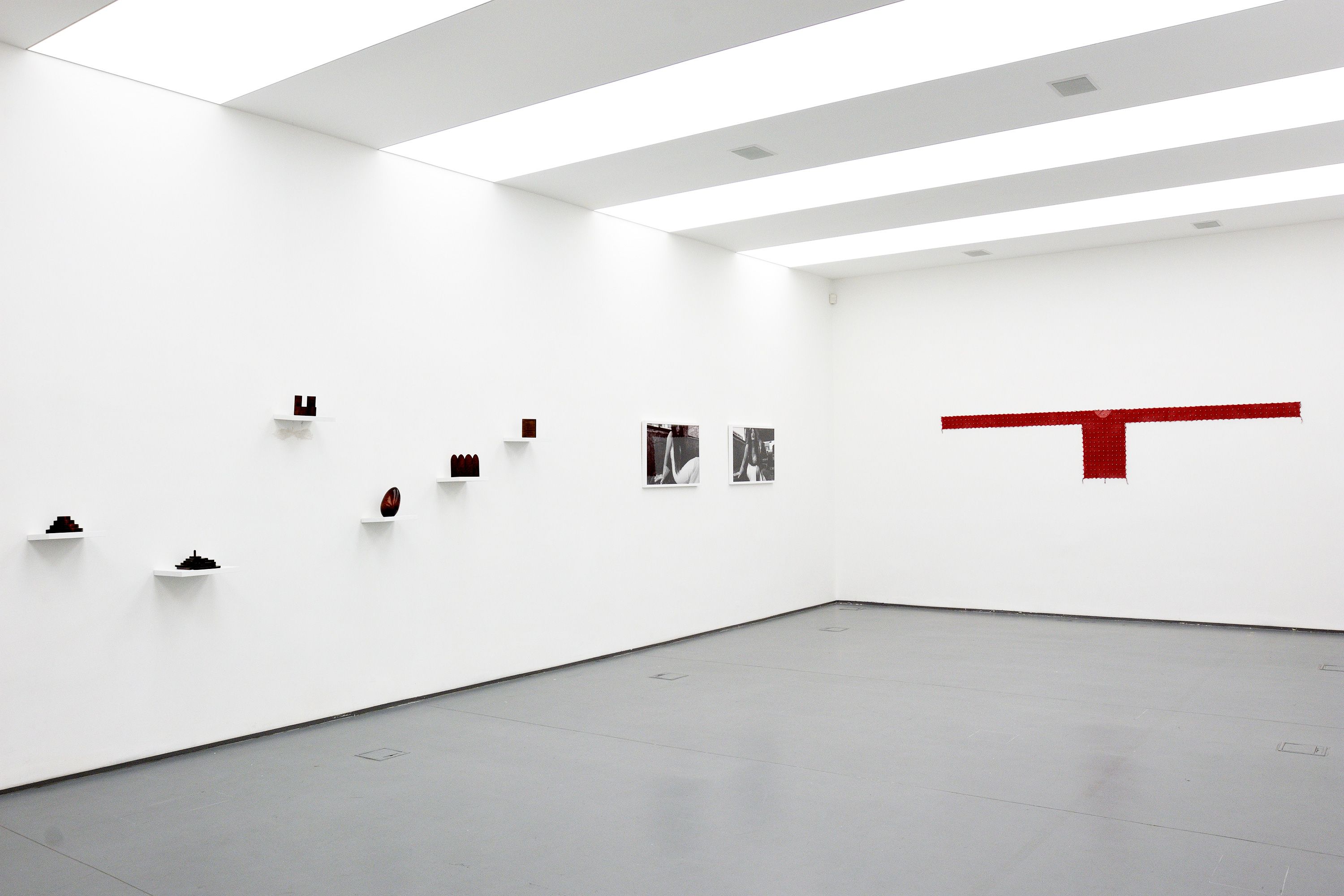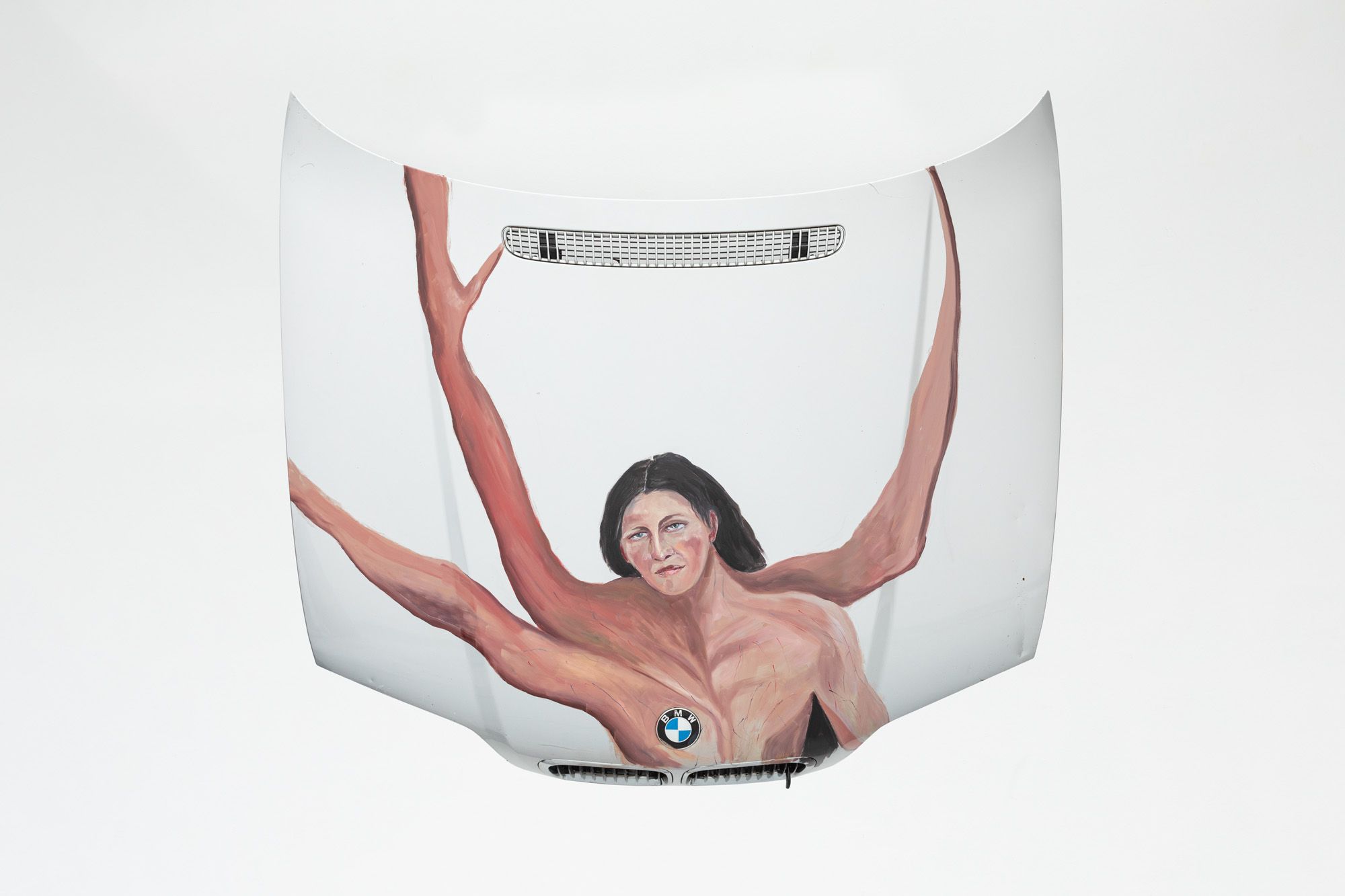Identification – Field exercises after Katalin Ladik
| Venue: | acb Gallery |
| Date: | Mar 10 – Apr 28, 2017 |
Description
In 1975, the Yugoslav neo-avant-garde artist of Hungarian descent, Katalin Ladik, performed an action entitled Identification (Identifikacija) on the stairs of the Academy of Fine Arts in Vienna. The occasion of her visit to the Austrian capital was a group exhibition presenting Yugoslav avant-garde art, in which she figured as one member of the Vojvodinian Bosch+Bosch group (1969–1976).The documentation of the piece took the form of two photographs, the first one shows her standing in front of a long Yugoslav flag hanging from the first floor, above the stairs, leading to the entrance of the prestigious Viennese institution, the second one presents her behind the flag.
On an individual level, the action scanned layers of identification ranging from the citizen’s general status as political entity, through their relation to state power, institutional authority, a culture or a higher social class, especially the 19th century bourgeoisie, to their belonging to a political block in a Cold War situation. It also touched the politicization of the woman and her body as a biological, social entity and national property, or simply the condition of the artist as a woman in a highly patriarchal system. On a broader scale, the piece forecasts how societies of the (not only post-communist) Eastern Bloc countries shape their contemporary identity, relate and identify with their past and/or present in the luring light of Western Europe and the European Union.
Taking as a starting point Katalin Ladik's piece, the exhibition explores different narratives, contexts and practices of identification through the work of six contemporary women artists from Central-Eastern Europe: Jasmina Cibic (SLO), Šejla Kamerić (BiH), Luiza Margan (HR/BG), Tanja Ostojić (SRB), Selma Selman (BiH) and Katarina Šević (SRB/HU).
Jasmina Cibic – Identification as Spectacle
Jasmina Cibic works with signals, words, and forms that represent a very particular way to do politics in order to deconstruct the spectacle of identification as political processes. Her project entitled Spielraum addressed the instrumentalisation of visual language and rhetoric in the construction of the State as a spectacle and investigated modes of how art and architecture serve as soft power strategies of every political order. The collages combine ‘picturesque and sublime’ landscapes captured by Marshal Tito’s official photographers during his travels and meetings with foreign dignitaries, and shapes sourced from the architectural plans and designs for the city of Belgrade developed for the occasion of the first Non-Aligned conference in 1961. The marbles examine the same question by combining the skies appearing in classical Hungarian landscape painting and the marble as a representative material used for the construction of official buildings, sieges of authority and power.
Šejla Kamerić – Identification as Exorcism
In Šejla Kamerić’s works, from the straightforward relation to death and pain emerges a way to exorcise them. The artist’s reference to the colour red — either in an obvious manner in the title of the works and by the use of red elements in the piece of work, or in an indirect way through a symbolic evocation or semantic association to the colour — appears as a chromatic translation of sufferance. Her work entitled Measure XM (2012) is a red long-sleeve in fish-net optics, made out of cotton and nailed, crucified to the wall in an unsettling spectacle. The technique of crochet is an activity usually performed to kill time, but in this particular work the use of red cotton thread and the oversized sleeves aimed to kill pain rather than time. In this same line of thought, her piece entitled Missing IV represents an empty dream-catcher made of golden threads and needles. The absence of dreams is a painful loss that the artist identifies and turns into something in order to exorcize it.
Luiza Margan – Identification as Reappropriation
The series titled Restaging Monument is based on photographs that the artist acquired from the family archive of the monument’s sculptor Vinko Matković, posing during different stages of its production in front of the sculpture. Playing with the pathos and the theatricality of the established master’s self-representation, Luiza Margan juxtaposes these scenes of “the artist at work” with photographs showing herself in physical exercise. The lines of her body and the additional elements she uses – a ladder, pieces of wooden or metal scaffoldings – are intruding, repeating, continuing or interrupting lines of scaffoldings or parts of the sculpture. She plays with and cheekily deconstructs the usual setup of the male artist as the active creator, versus the female model considered as static, passive muse, a norm first overthrown by Marcel Duchamp and his feminine alter-ego Rrose Sélavy. This sculptural collage is a statement to the bare monument, to female physicality, in which the artist’s body becomes a tool of reclaiming its own power.
Tanja Ostojić – Identification as Alarm
As a feminist performance artist, Tanja Ostojić roots her work in her own life experience as non-EU citizen, as woman and artist. Voicing loudly the arrogance of the European Union in relation with the integration of south-east Europeans, especially women, she addressed this topic in a performance entitled Looking for a husband with EU passport (2000-2003), in which she confronted her own vulnerability as non-European woman for who marriage is the only way to obtain European papers. The piece Untitled (After Courbet – L’Origine du monde, 2004) is also shedding light on this phenomena, qualified by the artist as a kind of prostitution. Referring both in content and in size the French painter Gustave Courbet’s original piece from 1866, the artist’s own naked body appears in the same position, only her genitals are covered with panties reproducing the European flag. The statement is clear: foreign women are only welcome in the EU if they drop their panties.
Selma Selman – Identification as Catharsis
The young Bosnian artist of Roma origins is working with performance, photography and painting. Her practice both embraces and blasts the stereotypes about Roma people by referring to her personal experience, life situations and stories. The photos entitled Mercedes 310 portrait the artist in a pristine white dress and stained working gloves in the back of a dirty and worn out Mercedes 310 car used by her father to collects waste iron. Her provocative look, her shout to the viewer is an act of defiance through which she takes on her family’s identity and way to exist, yet overgrows and transcends it with a certainly subversive aestheticization of the scene. Her work entitled Self-Portrait is a piece she performed on the streets of Rijeka, destroying a washing machine with an axe. A young girl in flowery summer dress destroying a washing machine to pieces in public space with an axe is a violently contradicting image which acts as a liberating scene and a catharsis of stereotypes.
Katarina Šević – Identification as Craft
The artist’s ongoing series entitled News from Nowhere (2009-ongoing) is a peculiar ensemble of handmade wooden objects. The series revolves around the issue of craft, craftsmanship and the place it occupies in contemporary society. Without any clearly distinguishable style, they evoke the furniture of the nineteenth century, the attributes of the bourgeoisie, political symbols of a declined era, object of everyday use or ambiguous, anachronistic, mundane-looking elements of unusual size with unknown function, usage, or meaning, yet movingly intimate. Through the reference to Craft as materialization of ideologies and a tool for material identification, Katarina Šević develops an existing/non-existing, remembered/forgotten, recreated/deconstructed and objectified diary-like environment. News from Nowhere is a familiar yet mysterious set of artefacts reifying the process of identification, a riddle to which only she has the keys and codes although generic enough to immediately recall upon the viewer’s own memories.



